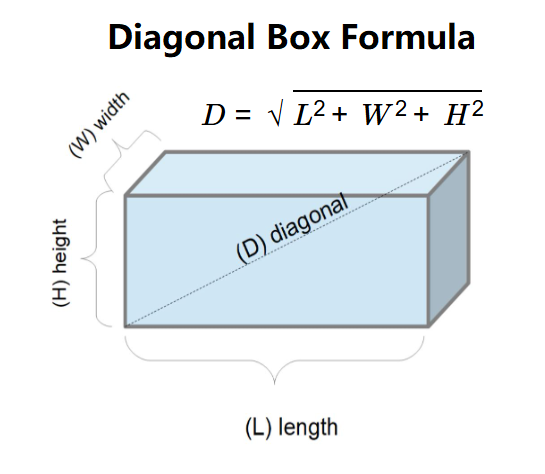 Home
Home
 Back
Back

Definition: This calculator computes the diagonal (\( D \)) of a rectangular cuboid (box), which is the straight-line distance from one corner to the opposite corner through the interior of the box.
Purpose: It helps in determining the longest straight-line distance inside a box, useful for packaging, shipping, and design applications to ensure items fit diagonally.
The calculator uses the following equation:
Where:
Steps:
Calculating the diagonal of a box is crucial for:
Example 1: Calculate the diagonal of a box with \( L = 10 \, \text{in} \), \( W = 5 \, \text{in} \), \( H = 3 \, \text{in} \), result in in:
Example 2: Calculate the diagonal of a box with \( L = 1 \, \text{m} \), \( W = 50 \, \text{cm} \), \( H = 30 \, \text{cm} \), result in cm:
Q: What is the Diagonal of a Box?
A: The diagonal of a box is the straight-line distance from one corner to the opposite corner through the interior, calculated using the lengths of its three dimensions.
Q: Why is the diagonal important?
A: The diagonal determines the longest straight-line distance inside a box, which is critical for fitting long objects or ensuring proper packaging.
Q: Can I use different units for each dimension?
A: Yes, the calculator allows you to select different units for length, width, height, and the result, converting all inputs internally for accurate calculation.